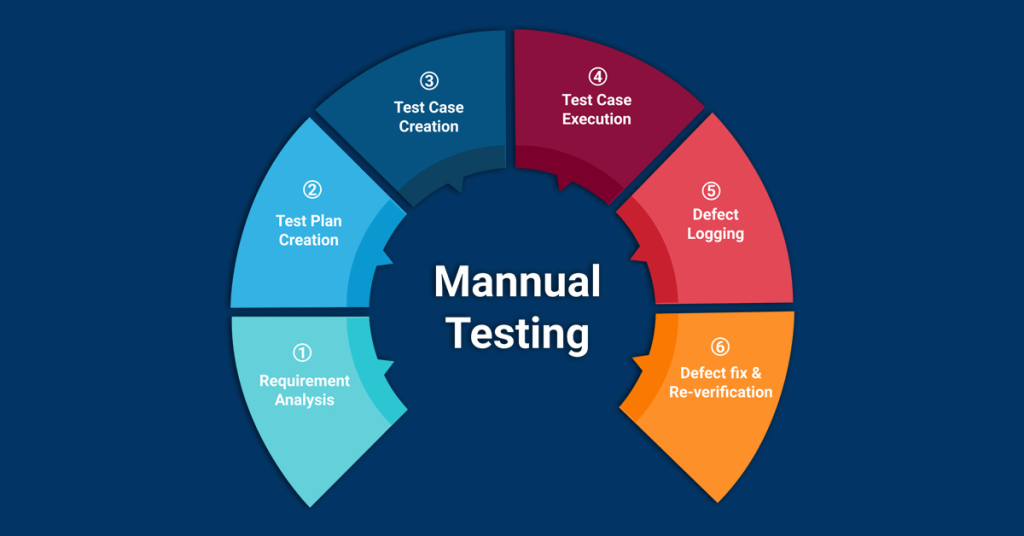
Manual testing stands as an indispensable component within the realm of software testing, where human testers assume pivotal roles in upholding the quality and reliability of software applications. To harness the full potential of manual testing, meticulous planning is of utmost importance, maximizing the efficiency and effectiveness of the testing process. Within this blog, we aim to furnish you with a comprehensive, step-by-step guide on planning for manual testing to realize successful testing outcomes.
- Understand Project Requirements: Prior to embarking on the journey of manual testing, it’s imperative to establish a profound comprehension of the project’s requirements. This necessitates active engagement with project stakeholders, encompassing individuals such as product managers and developers, to glean insights regarding the software’s functionalities, objectives, and intended user base. A holistic understanding of the project fosters more effective planning for your testing endeavors.
- Define Testing Objectives: Following a comprehensive comprehension of the project’s requirements, the next step involves the establishment of unequivocal testing objectives. This entails discerning the specific facets of the software that require testing, outlining the testing scope, and delineating the anticipated results. It’s imperative that these objectives are in perfect alignment with the project’s overarching goals and priorities.
- Create a Test Plan: A meticulously structured test plan forms the bedrock of your testing initiatives. This comprehensive document delineates the testing approach, scope, resource allocation, schedule, and anticipated deliverables. Its overarching purpose is to furnish clear guidance to the testing team, fostering a shared understanding of the testing process. Furthermore, it functions as a steadfast reference point throughout the testing phase.
- Identify Test Scenarios: In line with your comprehensive grasp of the project and the established testing objectives, the next step entails the identification of critical test scenarios that necessitate scrutiny. Test scenarios encompass distinct situations or functionalities within the application demanding evaluation. The compilation of a comprehensive list of these scenarios forms the cornerstone upon which your test cases will be constructed.
- Design Test Cases: Equipped with a catalog of test scenarios, the subsequent phase revolves around the meticulous design of detailed test cases for each scenario. These test cases should encompass step-by-step instructions outlining the testing procedure, clearly defined expected outcomes, and any essential preconditions or prerequisites. The creation of well-structured test cases instills systematic rigor into the testing process, assuring exhaustive coverage.
- Prepare Test Data: In readiness for the testing phase, it’s imperative to compile the requisite test data. This dataset could encompass sample user information, configuration settings, input values, and any additional data essential for emulating real-world scenarios. The availability of appropriate test data assumes pivotal importance in the accurate replication of diverse conditions during testing.
- Set Up the Test Environment: Prior to commencing manual testing, a pivotal prerequisite is the meticulous configuration of the test environment to closely emulate the production environment. This entails the meticulous setup of hardware, software, network configurations, and any other pertinent components that directly impact the application.
- Execute Test Cases: With the test cases and instructions at your disposal, the moment arrives for the execution of test cases. It is imperative to adhere diligently to the prescribed test steps, meticulously document the results, and promptly report any defects or anomalies encountered during the testing process. A methodical and well-organized approach to testing is paramount for success.
- Defect Reporting: In the event of encountering defects or issues, the accurate and timely reporting of these anomalies holds paramount significance. Leveraging a dedicated defect tracking system, meticulously record comprehensive details for each defect. This includes a thorough description, clear steps to reproduce, and an assessment of its severity. Effective defect reporting stands as a linchpin for streamlined defect resolution.
- Regression Testing: Following the successful resolution of defects, the imperative next step entails regression testing, designed to confirm that the rectifications haven’t inadvertently introduced fresh issues or disrupted pre-existing functionality. This meticulous phase is instrumental in upholding the overall quality of the software.
- Test Closure: Upon the culmination of testing, with all testing objectives successfully addressed, the testing process reaches its culmination. This final phase encompasses the consolidation of results, an in-depth evaluation of the testing endeavor, and the compilation of comprehensive test closure reports. These reports assume a pivotal role as invaluable reference materials and facilitate ongoing process enhancement.
Conclusion
Thorough planning is the bedrock of triumphant software testing. It entails a meticulous comprehension of project requirements, the establishment of precise objectives, the formulation of an all-encompassing test plan, the meticulous crafting of test cases, and the unwavering adherence to a structured testing protocol. This strategic approach facilitates the early detection and resolution of issues within the development cycle, ultimately culminating in the delivery of a high-caliber software product. Manual testing, when executed with precision and well-structured planning, remains an indispensable element in assuring the dependability and performance of software applications.
Digital Marketing Manager at Cotocus